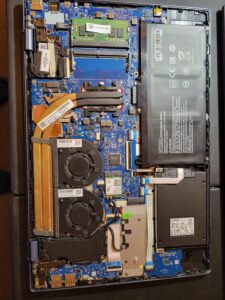
Motherboards, the core component of a computer system that connects and controls all the other hardware and software, can fail for various reasons, from simple wear and tear to sudden and catastrophic events. Understanding the causes of motherboard failure can help you prevent or troubleshoot common issues and make informed decisions about repair or replacement. Here are seven factors that can contribute to motherboard malfunctions:
1. Power surges and outages.
One of the most common and damaging factors that can affect a motherboard is a power surge or outage. A power surge happens when the voltage of the electrical supply spikes above the normal level, often due to lightning strikes or power grid fluctuations. A power outage occurs when the supply of electricity is suddenly interrupted, either by a blackout, a brownout, or a circuit breaker trip. Both situations can cause the delicate circuits and capacitors on the motherboard to overload or short, leading to permanent damage or data loss.
2. Overheating and cooling.
Another major factor that can impact the health of a motherboard is the temperature. Modern computer systems generate a lot of heat, especially when running resource-intensive applications or games, and require effective cooling systems to dissipate the heat. If the cooling system, such as the fan or the heatsink, fails or gets clogged with dust and dirt, the motherboard can overheat and produce errors or shutdowns. Conversely, if the motherboard is exposed to extremely cold or humid environments, it can suffer from condensation or frost, which can also cause corrosion or short circuits in the components.
3. Static electricity.
Static electricity, the buildup and discharge of electric charges that can occur when objects rub against each other, can also harm motherboards. When you touch a motherboard or any other electronic device, you can transfer static charges that exceed the safe levels and damage the sensitive components. To prevent this, you should always ground yourself, remove any synthetic fabrics or materials, and use an anti-static wrist strap or mat. Even small static shocks can have cumulative effects on the motherboard over time.
4. Age and usage.
Like any other mechanical or electronic device, motherboards have a limited lifespan and can wear out over time with regular usage. The precise duration and quality of a motherboard depend on many factors, such as the brand, model, materials, manufacturing process, and environmental conditions. However, a motherboard that has been used for several years or has undergone many upgrades or repairs is more likely to show signs of degradation, such as slower performance, intermittent crashes, or hardware conflicts.
5. Environmental factors.
Other environmental factors can also affect the stability and safety of a motherboard. For example, exposure to moisture, dust, smoke, and chemicals can damage the circuits and connectors, as well as attract pests or rodents that can chew on the wires or components. Moving a computer system frequently, especially during operation, can also cause mechanical stress or dislodgement of parts. Finally, using incompatible or faulty components, such as RAM, CPU, or power supply, can put additional strain on the motherboard and cause irreparable damage.
6. Malfunctioning peripherals.
Sometimes, a motherboard failure can be caused by a peripheral device, such as a graphics card, sound card, or USB drive. If one of these devices fails or misbehaves, it can send incompatible or excessive signals to the motherboard, disrupting its normal operation or causing it to shut down. To rule out this possibility, you should disconnect or replace any recent peripheral devices and see if the motherboard still exhibits the same symptoms.
7. Manufacturing defects.
Finally, some motherboards can fail due to defects or errors in the manufacturing process. This can happen despite rigorous testing and quality control procedures, and may affect only a small percentage of the products. However, if you suspect that your motherboard has a manufacturing defect, you should contact the manufacturer or the retailer and ask for a warranty replacement or repair.
In conclusion, motherboards can fail for many reasons, some of which are preventable or reversible with proper care and maintenance, while others require professional diagnosis and treatment. By keeping your computer system clean, cool, and grounded, and by using reliable and compatible components, you can help extend the life of your motherboard and avoid costly repairs or replacements.


